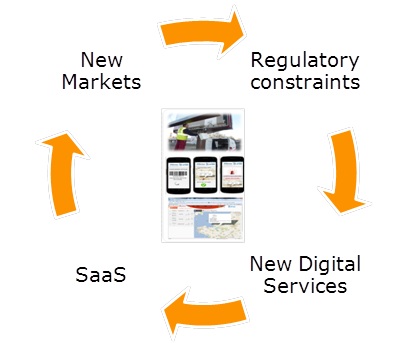IOT AND TRANSPORTATION
July 2, 2015
The second VINT report on Design to Disrupt (D2D), titled “New Digital Competition”, contributes significantly across industries by focusing on the platform economy.
Ten principles were proposed in this document. It’s worth pausing on the principle “Getting the MOST out of SMACT.” By digging into the opportunities offered by the Internet of Things and working in a collaborative manner, it is indeed possible to offer the transport industry on a dedicated digital platform.
By combining the expertise of three complementary businesses – Kuantic for Embedded Device, Gruau for the Transport Business and Sogeti for IT – it has been possible to practically and operationally illustrate the implementation of a ‘framework for corporations.’more–>
Beyond the vehicle-processing core business for different modes of transport (Refrigerated transport for human blood, organs, etc.) in vehicle fleets (thermal, electrical, etc.), the IoT technologies can generate maximum benefits in the following two areas:
Therefore, creating this capability is a good way to illustrate the principle “Butter your bread on Both Sides” as recommended in the second VINT report on D2D.
For more information, read the fourth VINT Report on IoT : SMACT and the City
Co-authors: Jacques Mezhrahid and Fabien Senlanne

 English | EN
English | EN 

